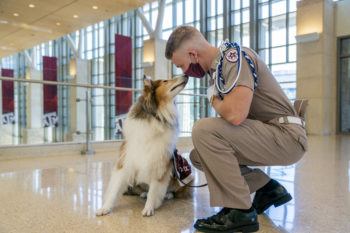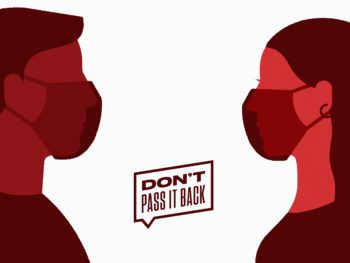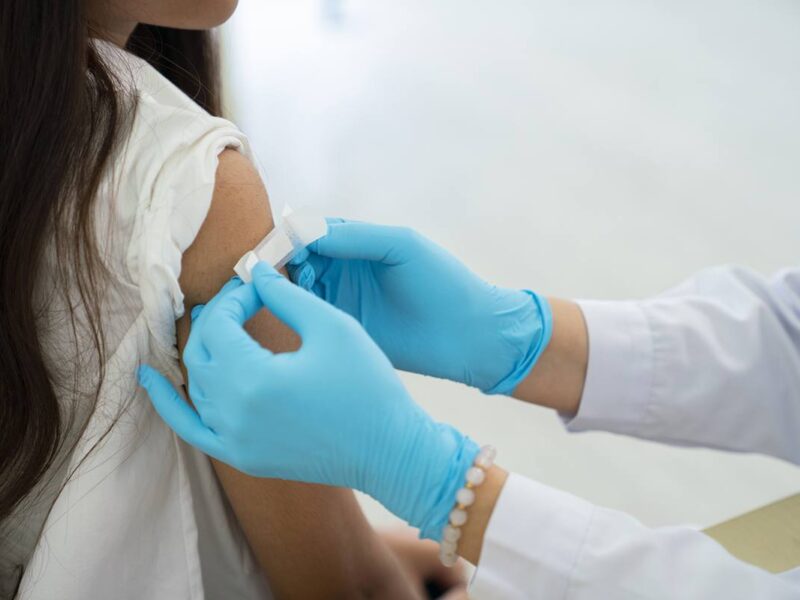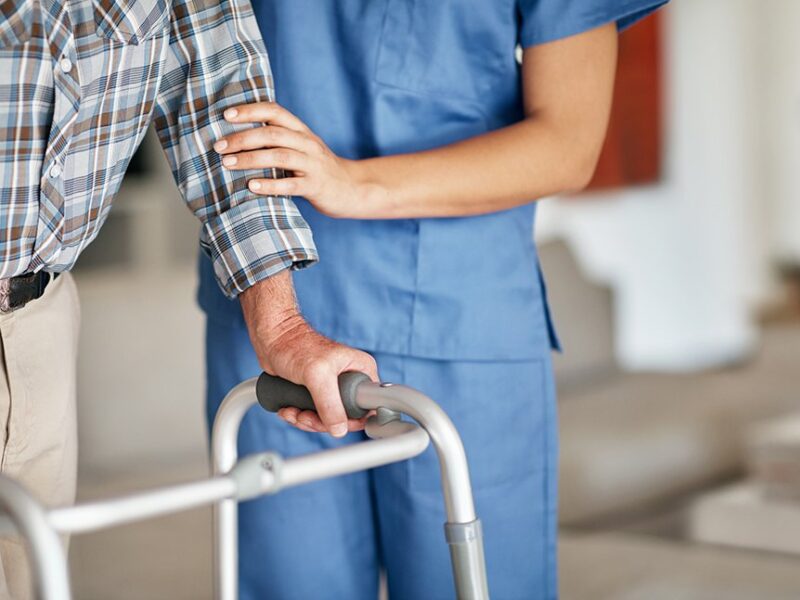‘Don’t Pass It Back’ Reminds Aggies That Wearing Face Coverings Is Selfless Service

After five months of online-only classes, Texas A&M’s fall semester starts Wednesday with hybrid learning options and a new mandate from the administration.
Wearing a face covering on campus is a requirement whether inside a building or when outside and unable to socially distance from others, which means being at least six feet apart. Exemptions include disability concerns or religious reasons, but must be approved by the Offices of the Dean of Student Life.
The COVID-19 pandemic has created unprecedented challenges for colleges and schools everywhere as most have been forced to adapt to ever-changing scenarios. That includes A&M — one of the country’s largest universities with an enrollment of almost 70,000 students.
Texas A&M President Michael K. Young announced in June that everyone on campus must wear a face covering to help prevent the spread of the virus. The disease has killed more than 163,600 people in the U.S., and infected roughly 5.1 million people.

Don’t Pass It Back
Wearing a face covering is a way for Aggies to show adherence to the university’s core values, said Krista Berend, director of social media at Texas A&M and a member of the working group that created the COVID-19 safety awareness campaign called “Don’t Pass it Back.”
“As Aggies, we know that we are called on to be leaders of character to serve the greater good – and the simple act of wearing a face covering is one of easiest ways we can all serve the greater good right now, no matter where we are or what we are doing,” said Berend, who graduated from the university in 2009 with a bachelor’s degree in communication. “Wearing a face covering is an act of selfless service that can keep our campus and communities safe during this pandemic. Aggies can and should lead the way in this effort.”
The “Don’t Pass it Back” working group was formed over the summer and includes members of the Division of Student Affairs, Texas A&M Athletics and the Division of Marketing & Communications.
“Each of these organizations were working separately on developing COVID-19 communication for the campus community,” Berend said. “We joined forces so we could get this information out as quickly and succinctly as possible to keep our students, faculty and staff safe as we started to make preparations to return to campus this fall.”
Face Covering Mandate
Requiring a face covering is an action that simply must be taken, said Daniel Pugh, vice president for Student Affairs.
“Texas A&M’s new face covering policy* is part of a comprehensive set of plans rolling out across the university that are designed to keep everyone healthy and safe in Aggieland, and to create a social norm of prevention,” he said. “All of us share the responsibility of protecting our classmates, faculty and staff from this contagious disease.”
Health-care professionals worldwide, including those at Texas A&M, believe that the face covering policy, while perhaps a bit inconvenient, is necessary. A study led by a Texas A&M professor concludes that face coverings are critical in stopping the spread of the virus.
“Wearing fabric or medical masks isn’t like wearing personal protective equipment (PPE) in an occupational setting,” said Adam Pickens, an instructional assistant professor in the School of Public Health. “PPE protects the wearer from exposure to something in the environment, whereas fabric and surgical masks help disrupt the dispersal and distribution of aerosol particles we exhale that may contain the virus. These masks are all about limiting what we as individuals who may have been exposed to novel COVID-19 are putting back out into the environment.”
Martha Dannenbaum, director of Texas A&M’s Student Health Services, agreed, saying that the main benefit of wearing face coverings is that they limit the amount of droplets the wearer releases into the surrounding environment when they open their mouth.
“COVID-19 is spread primarily through respiratory droplets, so if we reduce the amount of respiratory droplets and distance these travel, we reduce the risk of infecting other people,” she said. “Add in physical distancing (six feet or more between people) and frequent hand hygiene to further reduce the risk of spread.”
Managing Minor Discomfort
Dannenbaum said that some people might consider a face covering uncomfortable to wear, noting that they can be “hot, irritating to the skin and cause your glasses to fog up.”
She recommends face coverings that fit well across the bridge of the nose to reduce glass fog. Also, placing a tissue along the bridge of the nose under the mask or hypoallergenic tape can reduce fogging. Using soft double layer cotton fabric and hypoallergenic laundry soap for washing reduces irritants.
“We can’t fix hot in the Texas summer, but the policy does allow for not wearing face covering when outdoors as long as physical distancing can be accomplished,” Dannenbaum said, adding that self-isolation is very important for anyone who has tested positive, but sometimes getting people to do so can be difficult.
“It is hard to be 100 percent compliant. As humans, we are social beings and want to physically be with other people,” she said, adding that people can actively spread the virus with no symptoms.
Dannenbaum said she understands that some may be tired of hearing about COVID-19, but with fall classes starting, it’s vital to follow university guidelines.
“Many people are experiencing ‘pandemic fatigue’ from the constant influx of information and ever-evolving recommendations,” she said. “The fact that we are in a pandemic necessitates these additional preventive measures of face coverings, hand hygiene and physical distancing. It is likely to be a part of preventive health education for the next few years.”
Dannenbaum said since most classes have a virtual option, students can still access their classes so they will not be obligated to attend a class in person when they are ill.
“Because the traditional age college population does not typically experience severe COVID-19 infection symptoms, many will be able to continue to participate in their academics while they are recovering and isolating the required length of time,” she said.
Selfless Service
Texas A&M students will, and must, do what is necessary to keep everyone safe, said Student Body President Eric Mendoza ’21.
“The new face covering policy is a key part of ensuring students can come and stay on campus,” he said. “Wearing a face covering is an act of selfless service and a simple first step all students can take to help protect the most vulnerable among us.”
Everyone needs to remember that although we can’t see the virus, we need to assume it is present everywhere, said Garry Gore, EMS medical director of Student Health Services, who added that wearing a face covering is a learned discipline, as are self-isolation and social distancing.
“Like any newly-desired behavior, we will have to continue to reinforce the message until it is accepted as more routine practice,” he said. “Young adults socialize and having to stay apart seems unfair. Our generation has never before experienced a problem like this virus and new threats require new behaviors until we get a vaccine.”
Gore said that motivation to self-isolate when ill and socially distance would come more easily if students were adversely affected as often as older adults.
“I am certain young adults would take this disease much more seriously if it killed younger persons at the rate it kills the elderly,” he said. “If you wouldn’t want to be exposed to the virus, then don’t potentially expose others to the virus.”
Gore noted that a negative test does not guarantee a person that they won’t become positive the following day. “We see it every week in the clinic,” he said. “Also, if you have close contact with someone with lab-confirmed COVID-19, quarantining for 14 days is required even if you test negative for the virus during that quarantine period.”
More information regarding Texas A&M and its response to the virus can be found on the Texas A&M COVID-19 site.
* This link is no longer active and has been removed.
Media contacts:
- Daniel Pugh, 979-845-4728, vpsa@tamu.edu
- Kelly Brown, brown@tamu.edu





